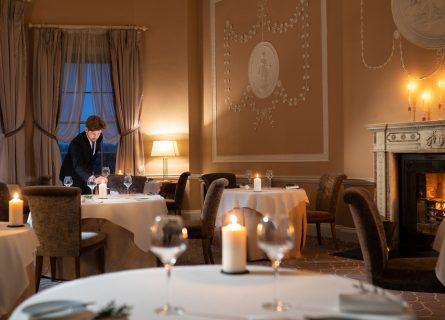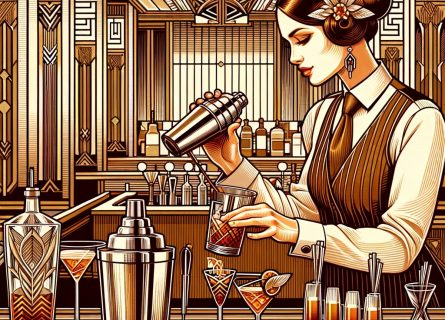Kilkenny Travel Guide
Medieval Splendor Meets Modern Vitality - A Tapestry of History, Culture, and Irish Charm
Charming medieval Kilkenny boasts a privileged location beside the River Nore and is undoubtedly Ireland’s most attractive inland city. It is renowned for its unique architectural style and vibrant cultural scene; the city is rightly proud of its heritage and hosts various festivals, including a major arts festival, a gourmet festival, and the quite amazingly international Kilkenomics Comedy and Economic Festival. Not to mention the numerous fine restaurants, craft beer pubs, and atmospheric old bars that fill the city, full of that famous Irish warmth and flair for hospitality, but it’s not just the location that’s attractive – the south-east of Ireland enjoys the warmest climate in the country, so visitors might even enjoy alfresco drinking and dining in the summer months.
Kilkenny’s enviable location and (relatively) warm climate have always presented an attractive prospect for invaders and settlers. Historians have uncovered Neolithic tombs in the Valley of the Bone, suggesting that nomadic tribes settled in what we now know as Kilkenny centuries before the early Christians arrived. Yet, in the past, Ireland’s isolation cut it off from many of the troubled events of European history. Roman regions, who controlled most of neighboring Britain, never invaded, and Kilkenny’s early history is shrouded in myths of warring gods and heroic High Kings.
The Birth of a Monastic Center
History records that Kilkenny began as a monastic settlement in the 6th century AD. A church was built to honor St. Canice – today known as St. Canice’s Cathedral – and the settlement grew in size and religious importance. Indeed, the bellicose Celtic tribes quickly embraced Christianity in the 6th century AD, and by the 8th century, Kilkenny was an important ecclesiastic power in the Leinster region.
During this period, Kilkenny enjoyed an era of relative peace, and across Ireland, huge monasteries were founded, where scholarship and the arts flourished. However, in 795 AD, the Vikings invaded Ireland and attacked many settlements, including Kilkenny, over the next century. There were plenty of skirmishes between local tribes and the Nordic warriors, although the Vikings never succeeded in gaining complete control of Ireland. In 1014 AD, the Irish High King Brian Boru defeated the Viking King of Dublin, and the Vikings’ presence was all but eliminated.
Anglo-Norman Ascendancy
However, in 1169, the Anglo-Normans arrived in Ireland with greater ambitions than their Viking counterparts. Many Irish chiefs submitted to Henry II of England, and his Anglo-Norman knights carved out large fiefdoms for themselves. After the invasion, the Anglo Knight Richard Strongbow established Kilkenny’s first castle, and by the late thirteenth century, the settlement was completely under Anglo-Norman control.
Kilkenny thrived under English control, and between the 13th and 14th centuries, an unparalleled age of prosperity dawned upon the settlement. With its official status as the seat of the Lordship of Leinster, Kilkenny attracted a growing number of artists and traders who wished to share in this newfound prosperity. A new wealthy merchant class emerged, and Kilkenny soon rose to the ranks of Ireland’s largest and most important inland town.
Sadly, this golden age of fortune was not to last. The Black Death arrived with a vengeance in 1348 and killed many of the town’s residents. There were also several skirmishes between Gaelic forces and their overlords, although nothing approaching a serious rebellion. But in the 15th century, many of Kilkenny’s buildings were improved or replaced, with new churches, townhouses, and abbeys helping to engender a new era of prosperity.
In the 16th century, a massive political shift swept through Ireland. In 1532, Henry VIII broke with the Catholic church, and the country became a battleground between Irish Catholics and English armies dispatched to crush resistance. Henry was declared King of Ireland in 1541 and began a campaign of discrimination against the resident Irish Catholics. However, in 1609, King James I of England and Ireland granted Kilkenny official status as a city – these were interesting and turbulent times.
English Ascendancy and Catholic Resistance
Kilkenny was at the center of a rebellion against English administrative rule in 1641, spearheaded by Irish Catholic nobles who were sick of the growing discrimination and ill-treatment from their Protestant rulers. This Confederation of Kilkenny was overthrown during the Cromwellian conquest of Ireland in 1649 when Oliver Cromwell overthrew the English Monarch Charles I. Irish lands were confiscated and given to Protestants from England and Scotland. These were dark times indeed for the residents of Kilkenny, and the city became something of a provincial backwater under Cromwellian rule.
However, the restoration of King Charles II in 1660 and Cromwell’s death paved the way for a gradual Renaissance in the city’s fortunes. The successor to Charles II, his brother James II, was crowned King following Charles’ death and favored a policy of religious tolerance towards Irish Catholics. He was the last Roman Catholic Monarch to rule Ireland and England until he was deposed in the Glorious Revolution of 1688.
England’s conquest of Ireland was completed with William of Orange’s victory over James II in 1690 and his subsequent exile to France. During the final English Ascendancy, repressive penal laws denied Irish Catholics in Kilkenny the most basic freedoms. However, small groups of rebellious Catholics continued to fight for their cause, and opposition to English rule was never totally crushed.
In the 18th century, Kilkenny again found hope and prosperity as the Industrial Revolution swept Ireland and completely changed the country’s economy. The city became a mining and manufacturing center, with grand Georgian mansions constructed with newfound wealth and several important buildings and improvements commissioned.
Hardships
In contrast, the 19th century was marked by hardship, famine, and political unrest. The famine of 1845-8 was a bleak period in the city’s history. Over two million people died across Ireland, and many of Kilkenny’s residents were forced to emigrate. Ireland’s campaign also marked the period for home rule – The Treaty of 1921 divided the island in two. The South became the Irish Free State, gaining complete independence in 1937. However, Kilkenny was largely unaffected by the 2nd World War as Ireland remained neutral throughout the conflict.
But despite its hardships, Kilkenny is today a quintessentially 21st-century Irish city: dynamic, friendly, and optimistic. It has managed to preserve the best elements of ancient and contemporary Ireland, with a vibrant modern economy, cultural scene, and nightlife. At the same time, traditional culture is in no danger of being eroded. Its inhabitants love legends, literature, and songs, with festivals essential to community life. Just head to one of the city’s charming pubs and participate in an impromptu music session – a reminder of the vibrant and exuberant spirit that underpins this great city today.
-

Mount Juliet, Fine Dining and Golf Gastronomy & Wine
Whether you are dining in exclusive luxury or a modest local pub, one thing you can be sure of in Ireland is that you will receive a warm welcome. Irish hospitality is legendary and is one of the main draws for tourists visiting this beautiful country. Moreover, thanks to Ireland’s abundance of high-quality seafood, artisan cheese (our fave local cheese is Knockdrinna), craft ciders and beers, not to mention great whiskey, Irish cooking now ranks among the best in Europe; visitors can no longer proclaim that Ireland is a culinary graveyard!
Eating out in Ireland has changed dramatically over the past 15 years. Traditional Irish cooking revolved around rustic, filling dishes such as Irish stew, Colcannon, Beef, and Guinness pie, hardly on par with gourmet paradise. But this now represents a wafer-thin slice of a much larger pie; a surfeit of innovative, younger chefs working with small boutique food producers and organic farmers have completely transformed Ireland’s food scene.
Today, the hungry visitor can expect a superlative range of dishes from local ingredients, including fresh oysters, scallops, mussels, venison, sea vegetables, and much more. Modern Irish cuisine is influenced by classical European culinary techniques applied to delicious local produce with spectacular effects. Seafood is a constant highlight, as is Irish beef and game when in season.
Culinary Hotspots
Kilkenny now has various restaurants to cater to every budget and desire, from cafés to gourmet destinations. One of our favorites is Langton’s Restaurant and Bar on John Street. They serve exquisite fresh fish and traditional dishes in an ornate dining room. Stuffed mussels are among local favorites. Try Rinuccini near Kilkenny Castle for excellent Italian cooking – the pasta is to die for. Campagne made some waves as the town’s first restaurant to gain a Michelin star. And out of town, Mount Juliet’s restaurant is graceful and lovely.
Ireland has no tradition of vine cultivation, and consequently, don’t expect to sample too many local vintages! However, most restaurants boast an excellent wine list, and plenty of imported wines are available. But Kilkenny has plenty of craft beer options; the city has a long and proud history as a hub of craft brewing in Ireland. O’Hara’s Brewery Corner is now an institution! Irish whiskey is another highlight – try Redbreast 15-year-old Malt Whiskey. There is also a brewery museum for Kilkenny beer in the city, and they do a fun tour.
Highlights
-
Kilkenny Castle
Built in the 1190’s, Kilkenny Castle was the seat of the Anglo-Norman Butler family from the late 14th century up until 1967. With its drum towers and solid walls, the castle retains its medieval form, but has undergone many alternations over the years. Today it is Kilkenny’s biggest tourist draw and a must-visit attraction. A major highlight is the Long Gallery, which was rebuilt in the 1820’s to house the Butler art collection. It boasts a striking hammer beam and glass roof. The painted ceiling also merits a mention, with motifs inspired by the book of Kells.
-
St Canice's Cathedral
Kilkenny’s so called Irishtown district is dominated by the spectacular St. Canice’s Cathedral and its round tower than many visitors ascend for unparalleled views of the city. The Gothic Cathedral dates back from the 13th century and is surely one of Ireland’s most fascinating religious buildings. It boasts a fine sculpted west door and array of 16th century tombs with striking effigies of the Butler family in the south transept.
-
Waterford
Less than a 1 hour drive away from Kilkenny, Waterford is Ireland’s oldest city and definitely merits a day trip. It was founded by the Vikings in 914, and later occupied and improved upon by the Anglo-Normans. It is a small city that reeks of history; its commanding position on the Suir estuary made it southeast Ireland’s main port. Highlights include the remains of the Norman city walls and Christchurch Cathedral, designed by local architect John Roberts in the 1770’s.
Recommended for you
More information
If you would like us to customize an exclusive luxury tour, contact us and let us know your travel plans. We offer luxury food and wine tours for private groups of a mininium two guests. In addition, all of our private, chauffeured tours are available year-round upon request.

Cellar Tours
Welcome to Cellar Tours, the premier Luxury Travel Specialist since 2003. Our goal is to provide you with the ultimate food and wine vacation experience, with exclusive Mercedes chauffeured tours that showcase the best of local cuisine and wines.
Our team specializes in crafting bespoke, custom-designed vacations, events, and incentives tailored to your unique tastes and preferences. Travel is not just about seeing new places - it's about creating unforgettable memories and indulging in the finer things in life.
As members of Slow Food, OTAVA (Travel Agency Association in Spain), and the IACP (International Association of Culinary Professionals), we promote sustainable tourism and support local communities. We work closely with top-rated hotels, restaurants, and wineries to provide you with the highest level of service and attention to detail.
Whether you're planning a romantic getaway, a family vacation, or a corporate retreat, let Cellar Tours be your guide. With our passion for food and wine, extensive knowledge of local culture, and dedication to exceptional customer service, we're confident we can exceed your expectations.
Contact us today to start planning your dream vacation – we can't wait to hear from you!






